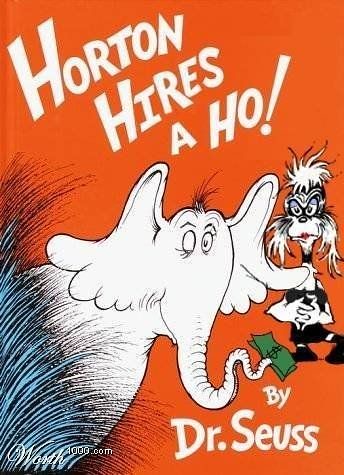BorisDK1 wrote:Well, firstly we need to remember that this is not some sort of Holy Grail one-number metric. There are constituent parts to PDSS ratings: the stop%, DPoss% and finally the DRat. And yes, it does reflect what actually happened on the floor because at some point you have to reconcile individual play with team performance defensively.
No, it doesn't reconcile with what happens on the floor. Look at the formula for the way DRat is calculated that you posted:
Code: Select all
DRat = TeamDRat + %DPoss x (100 x (Opponent Points / Scoring Possession) x (1 - Stop%) - TeamDRat)
In other words, you are computing DRat by taking some team defensive rating and then adding some number that is specific to the player.
So how exactly do I go from each of those DRats to then figure out what the team's DRat for the season will be? Or what our defense will be for the next game? Or how a particular lineup will perform?
In other words, how do you "reconcile individual play with team play defensively", as you said must be done?
It is very easy to do this with On/Off or even better, APM based tools. However, it appears to not necessarily work well with these Oliver ratings:
http://hoyaprospectus.blogspot.com/2008 ... tings.htmlhttp://sonicscentral.com/apbrmetrics/vi ... 42fad1ee78So I ask again, how do I go from this individual defensive number to an estimate of how a particular lineup will perform, for example?
BorisDK1 wrote:I wouldn't say this method is a "surrogate" for PBP metrics, because PBP metrics don't contain defensive data. You don't know who did what, other than if a block, steal, foul or defensive rebound takes place. Secondly, it precedes PBP metrics so it obviously isn't a surrogate anything.
Well, OK. Let me pause asking this question for now until you've answered the one above, since this part of my question depends on the previous part. This is mostly semantics...we can discuss it further later.
BorisDK1 wrote:Yep, I understood this. And I took issue with the FFTM variable being taken as a positive, in the posts I made on page 25. Makes no sense to give a player credit for sending someone to the FT line, even if they miss...
Sure, it makes sense: often, you choose to foul to stop an easy score to save your team some points. That's a partial stop being recorded on a possession, so why wouldn't it? Secondly, it doesn't count for much so it's not a big issue. Thirdly, it has to be accounted for at some point.
WTF? So if I am a foul-prone guy who sends an opponent to the line on every possession, I am in fact NOT penalized for this in any way? The possession has not ended once I've sent the guy to the line, it is still effectively continuing....
Look, imagine Bizarro Amir Johnson, who fouls on every possession and sends his guy to the FT line, which his guy then hits both of. According to your formula, his Stop Percentage has INCREASED! Do you not see how this issue causes your formula to be divorced from reality?
BorisDK1 wrote:Again, why am I getting credit for sending someone to the free throw line? Why is that good?
Propose an alternative, then.
You cannot do this, man. That is not the way you defend a technique. If I find a flaw in your technique, the burden is not on me to propose an alternative, but on you to prove the correctness of your technique (or justify it in some way.)
BorisDK1 wrote:Yes, I saw this too, and the formula listed in Oliver's book. But the explanation doesn't seem very convincing. I mean, think about it yourself...what is the natural way to trade off between defensive rebounds and forced misses? There isn't any. And as you'll notice in the link I posted on page 25 frm Oliver's website (
http://www.rawbw.com/~deano/articles/JordanvsOlaj.html), when he first did this he arbitrarily decided to weight defensive rebounds by 1/2.
BoP was written about seven years after that article. Oliver clearly worked with this somewhat and came across a more dynamic and accurate method of estimating the value of a forced miss. Improving the method condemns it, how exactly?
I'm not condemning him for changing the formula. I'm saying that what is the justification for either of them? Instead of 1/2, why not 1/4, 1/8, whatever? Which leads to a better stop percentage formula? Or rather, how do we compare different stop percentage formulas and find the weighting that is most consistent with reality?
BorisDK1 wrote:I wasn't really concerned too much about this particular aspect of the formula...the value being multiplied against %DPoss was the more interesting variable to me, not really the stuff before it.
That doesn't really apply to PDSS numbers, though.
I guess I should hold off on this comment until you've had a chance to respond to the first point.
BorisDK1 wrote:Again, neither method is "clearly" superior to anything. Even If your estimate of stop percentage measures reality, then it still isn't clear how good the model is, as Oliver said on his website:
Dean Oliver wrote:The defensive formulas are much simpler, because methods for defensive evaluation aren't as well developed theoretically. Simply put, I have struggled with evaluating players' defenses for many years now. I came up with a basic method three or four years ago called defensive stops, which are a way of estimating how many times a player stops the opposition from scoring. It's not a bad first approximation, but it misses out on players like Joe Dumars and Glenn Rivers, who prevent their assignments from scoring by not allowing them good looks at the basket. They don't get many defensive rebounds or blocks and don't steal the ball much, but they shut down their men. Doug Steele came up with a good way for accounting for this type of player, the kind of player I call a good man defender. On the other hand, my method does best at evaluating team defense, which would include blocks, steals, and defensive rebounds. Doug has begun including these in his method, too, but he uses a form of linear weights, something I disapprove of rather heartily.
And Dean is referring to the
estimated DRtg, there, not PDSS...
My point is that his comment applies to both. Both techniques make strong modeling assumptions that may or may not be correct. But anyway, let's revisit this comment once you've told me how to get from individual ratings to say lineup ratings and team ratings.
No biggie, hope you enjoyed your ribs. But like I said, hopefully you get the chance to look at the concerns I raised with the methodology on page 25. Like I keep saying, all of this stuff that Oliver does is meant to estimate something that we can calculate directly these days. If you don't have time to read the stuff on page 25, at the very least read the section called "Defensive Ratings" from his site:
http://www.rawbw.com/~deano/articles/JordanvsOlaj.htmlAnyway, hopefully you see what I'm saying, and why this approach of his has some pretty significant limitations.
I've read his website often, but I don't think you're clear in that he doesn't refer to PDSS on his site at all, and it is much older than
Basketball on Paper.
i understand that. But like I said, the problems I raised on page 25 are with PDSS, not the stuff on his site. The only reason I linked to his website is so that everyone here can understand his thought process and how he came up with these formulas, without necessarily owning a copy of his book.





















